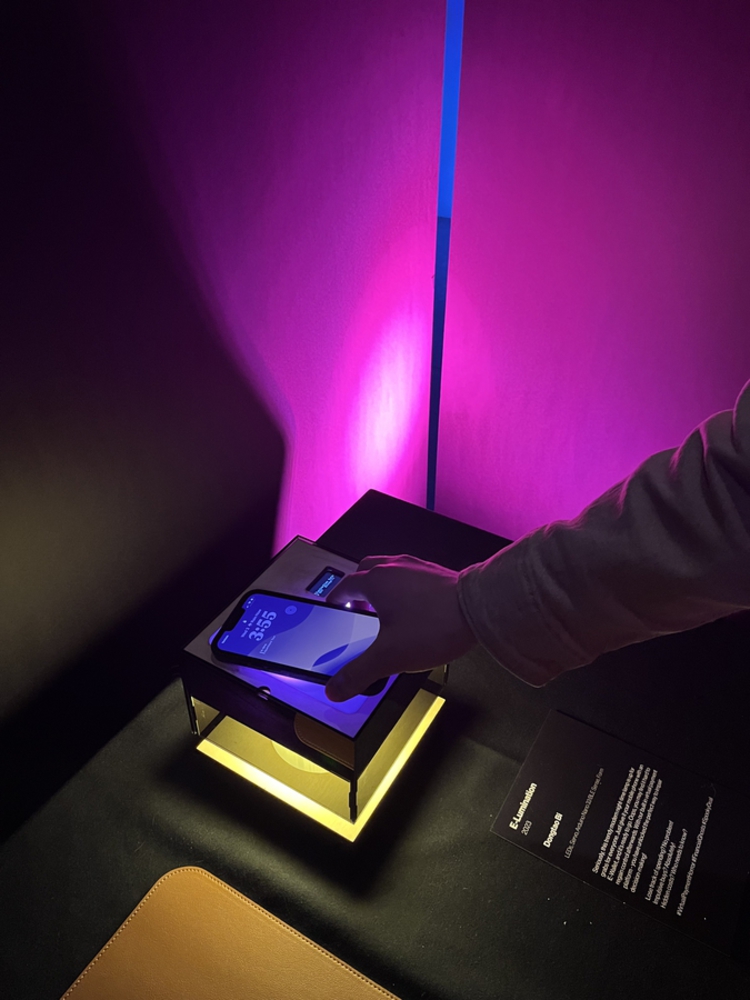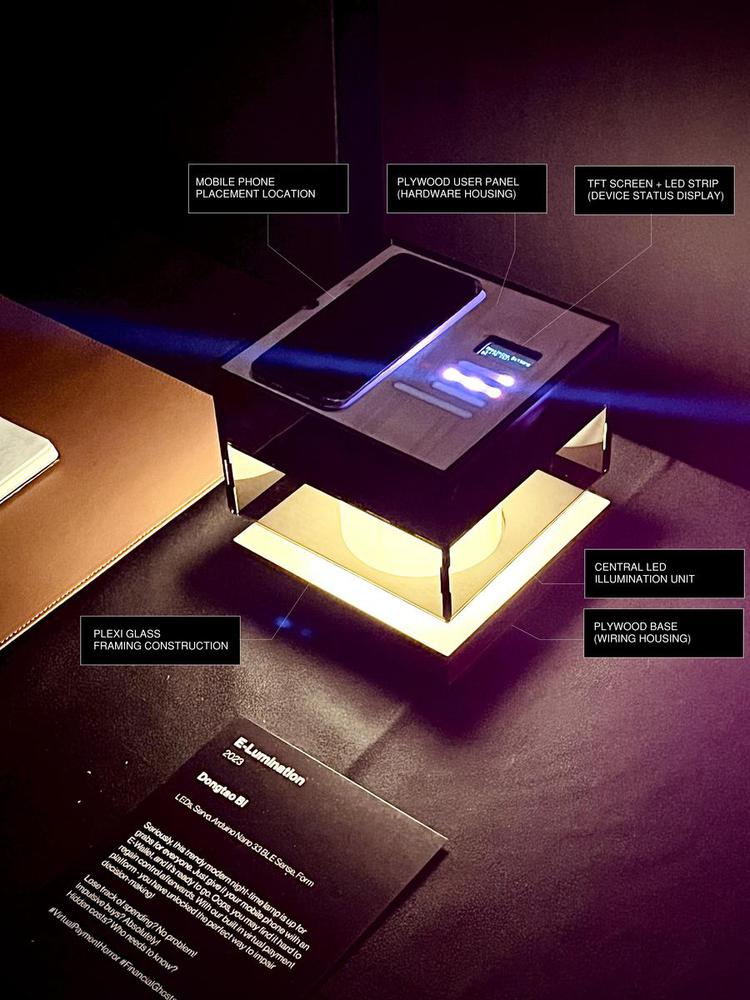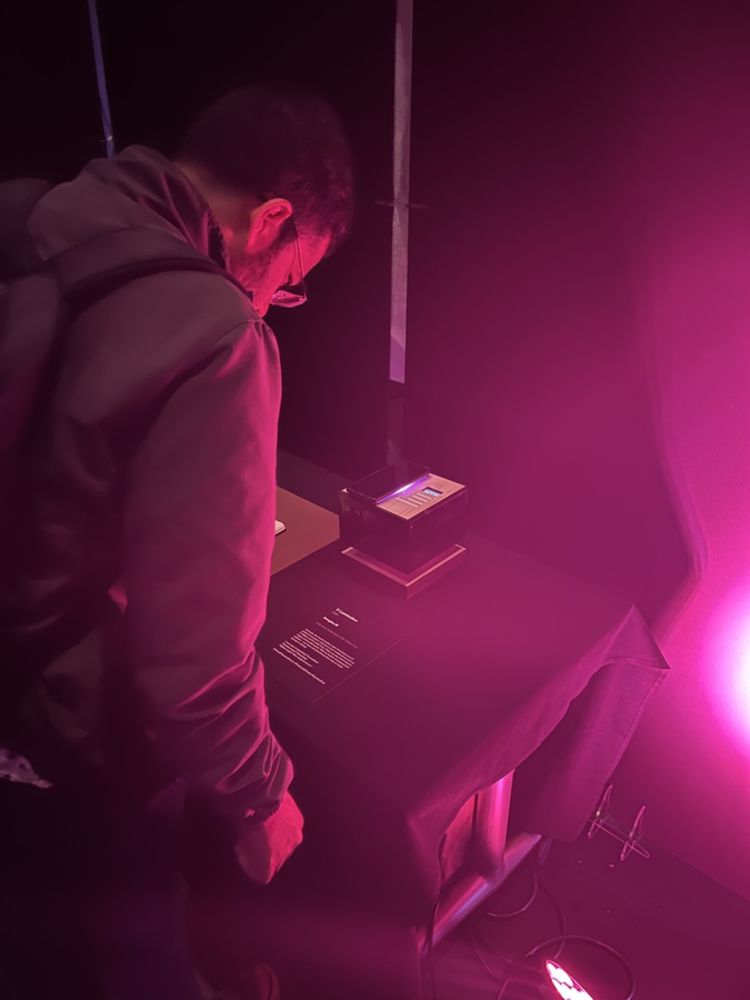Outcome
Overview
Smart home products can sometimes be a nightmare for users, as they can unknowingly surrender control of their personal devices and information. A frightening example of this is ‘Cryptojacking’ - a form of cyberattack where digital devices are secretly used to mine cryptocurrency, leading to data security issues and spine-chilling energy consumption.
The project seeks to imagine a modern lamp advertised as 'free' that only requires an attached mobile phone to illuminate. That would be awesome, right? But beware, as the lamp hides a sinister secret. It quietly uses your phone for Bitcoin mining in the background, slowly draining its power and reducing its lifespan without any noticeable signs of the haunting effects. Once it has its claws in your device, it’s already too late..
Once the user arrives at the interaction, situated as a home office workspace environment. The participant will be immersed in a dark space where he/she is searching for illumination. He/she then noticed there is a lamp with an illumination feature, which requires a mobile phone to be placed on top for activation. Over time, the lamp is secretly draining the battery life since it is using the participant's mobile device for Bitcoin mining in the background - generating a sizzling and unsettling noise from inside of the device. The participant is triggered to remove his/her mobile phone from the device, but he can't live without illumination in the space - causing panic in the participant's mind. Once the battery life is drained to a certain point, the lamp will deactivate and prompt the participant to use another mobile device to renew illumination.
Process
The project employs a variety of hardware and fabrication techniques to materialize the concept of a 'mobile phone interface for Bitcoin mining'. The intermediate development of this project (left) involves using a central LED lamp to serve as the primary functionality of the smart home object, which remains consistent during the second iteration (right).
Visualizing the project in 3D modeling space was exceptionally helpful, it helps with speculating both design thinking and physical considerations/constraints that determine workflow for fabrication down the road.
Intermediate digital prototype (left), Remastered digital prototype (right)
On the other hand, the project is amplified with a physical interface that intrigues participants to place their mobile devices - outlining the shape with a cellphone with an embedded proximity sensor that detects the placement and duration.
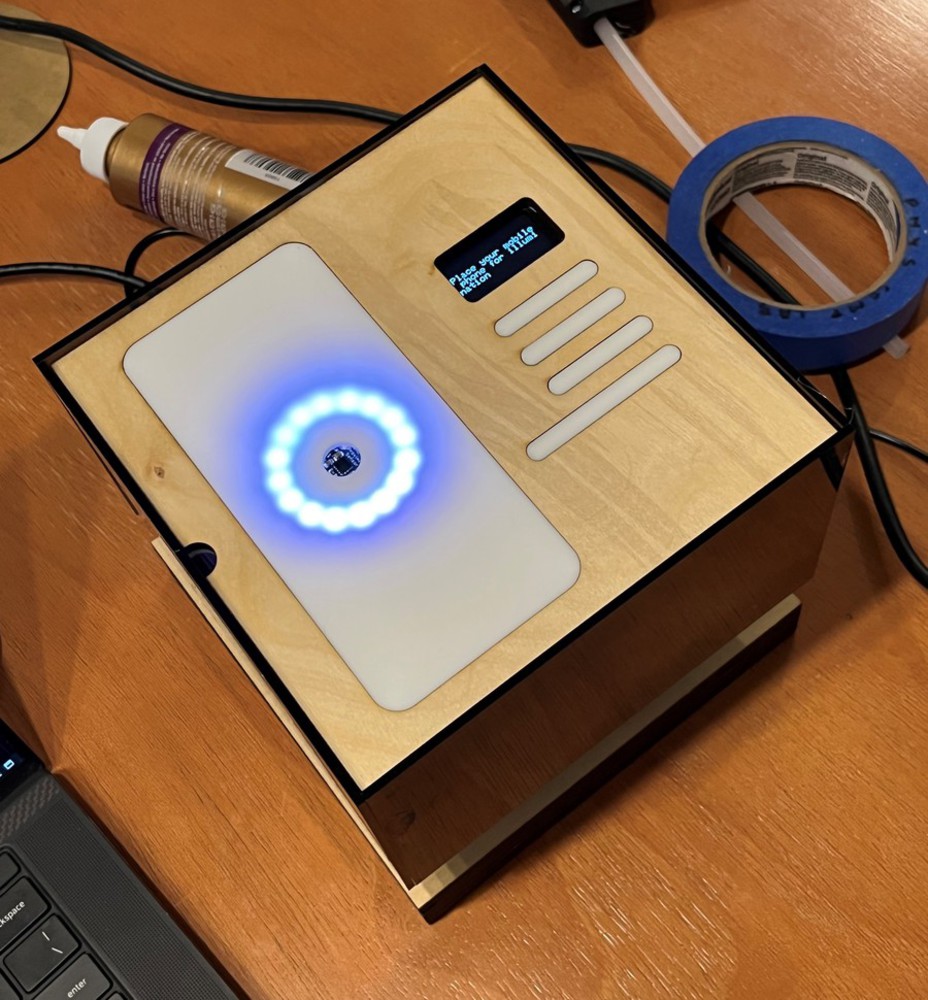
As peripheral inferences, the project also uses a LED strip and a LED ring to, highlight the placement location of the user's mobile device; while signifying the current status of the device through varying colors and brightness of the LED. It is note-worthy that the central LED light generates a lot of heat during operation, which is technically harmless for other electronic components, but it is hot enough to degrade some of the laminations used in assembly. Using a heatsink to help with distribution of heat is critical for this purpose.
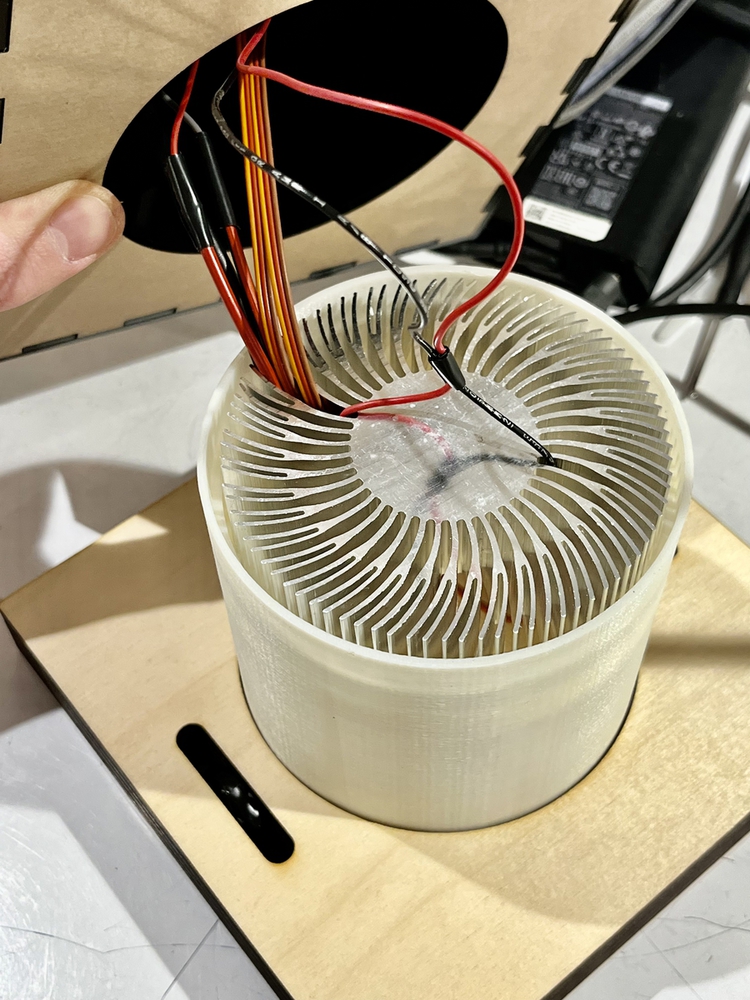
The device is also equipped with a TFT for text prompts for leading the user through the interaction. Users will be able to see the screen showing 'place your mobile device for illumination' once they arrive at the designated scene. Combined with the LED lighting effects indicating the status of the device, the project sought to create a cohesive experience for participants.
A servo motor is also embedded within the device; leveraging its acoustic effect running at varying speeds to simulate the unsettling noise caused by 'Bitcoin mining' in the background. The motor noise comes in at different pitches when it's running at different speeds/directions, which is an ideal reflection of the degree of 'battery life' from the participant's mobile device - sizzling in the background and causing the participant to panic.
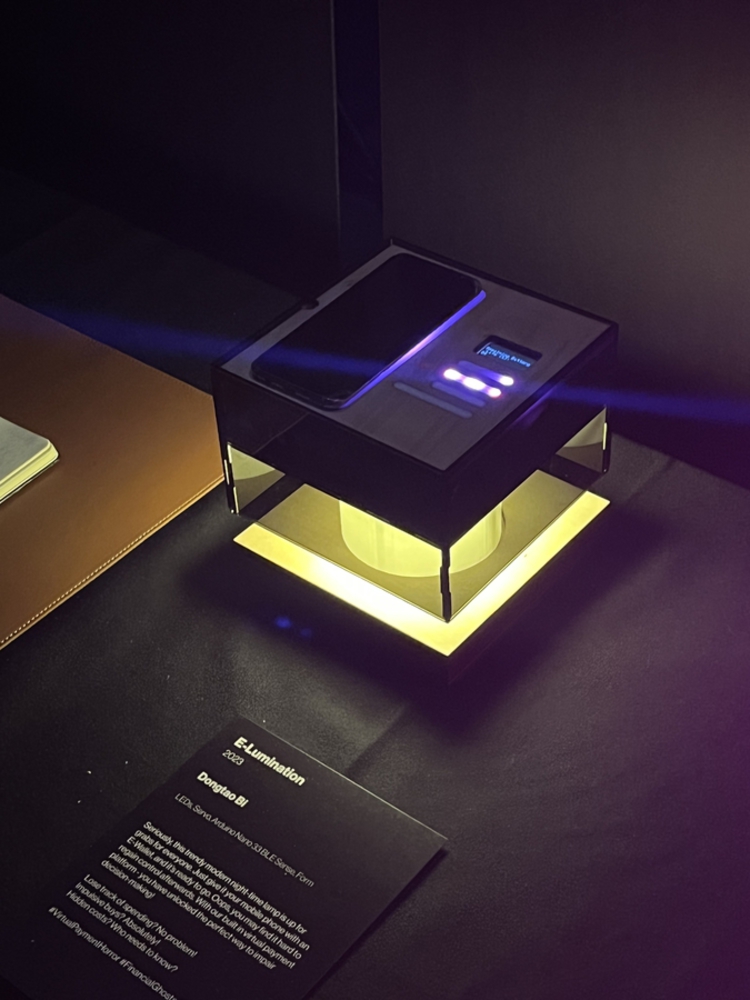
Reflection and Future Development
'How would I further incentify the interaction process to facilitate more instantaneous reaction from participants' was the leading question in my mind. The majority of the participants would take time to read the instructions on the object label once they arrive at the scene, whereas it takes a little while for them to understand how the device work in correspondence to the descriptions. Therefore, leveraging the prototype I already have to conduct usability testing will be a critical next step in my project.
Which interactivities can be added/reduced to incentify the concept during the interaction? The project is currently using a wide range of sensors and outputs, it may be a little too complex for participants to gain underlying concepts. Minimizing the theoretical footprint of the design can be helpful as a next step.
One group of participants arrived at the scene with curiosity about the device, pulled out their mobile device, and placed it on top of the lamp. Once the lamp starts running and displays a 'battery life degrading' message on the screen, the participants hurried to retrieve their mobile phone from the lamp to stop it from getting harmed. Such a level of immediate interaction is desirable and can provide opportunities for further articulation of this project over time.
Open Questions
- What research has been conducted to address these challenges and propose solutions in terms of smart home technology's transparency, explainability, and user consent? What are the outcomes of such research?
- What are the implications of the constant gathering of data by smart home technologies for the privacy and security of individuals, and how can these concerns be addressed?
- How can designers of smart home technologies prioritize informed consent and privacy as essential components of their design, and what measures can be taken to limit the collection of unnecessary data?
Fabrication
Assembly of the device is primarily composed of two parts: (1) the Primary housing of the lamp was constructed using laser-cut panels of plexiglass, while (2) the user interface is built with plywood panels to maintain the overall generic appearance and form.
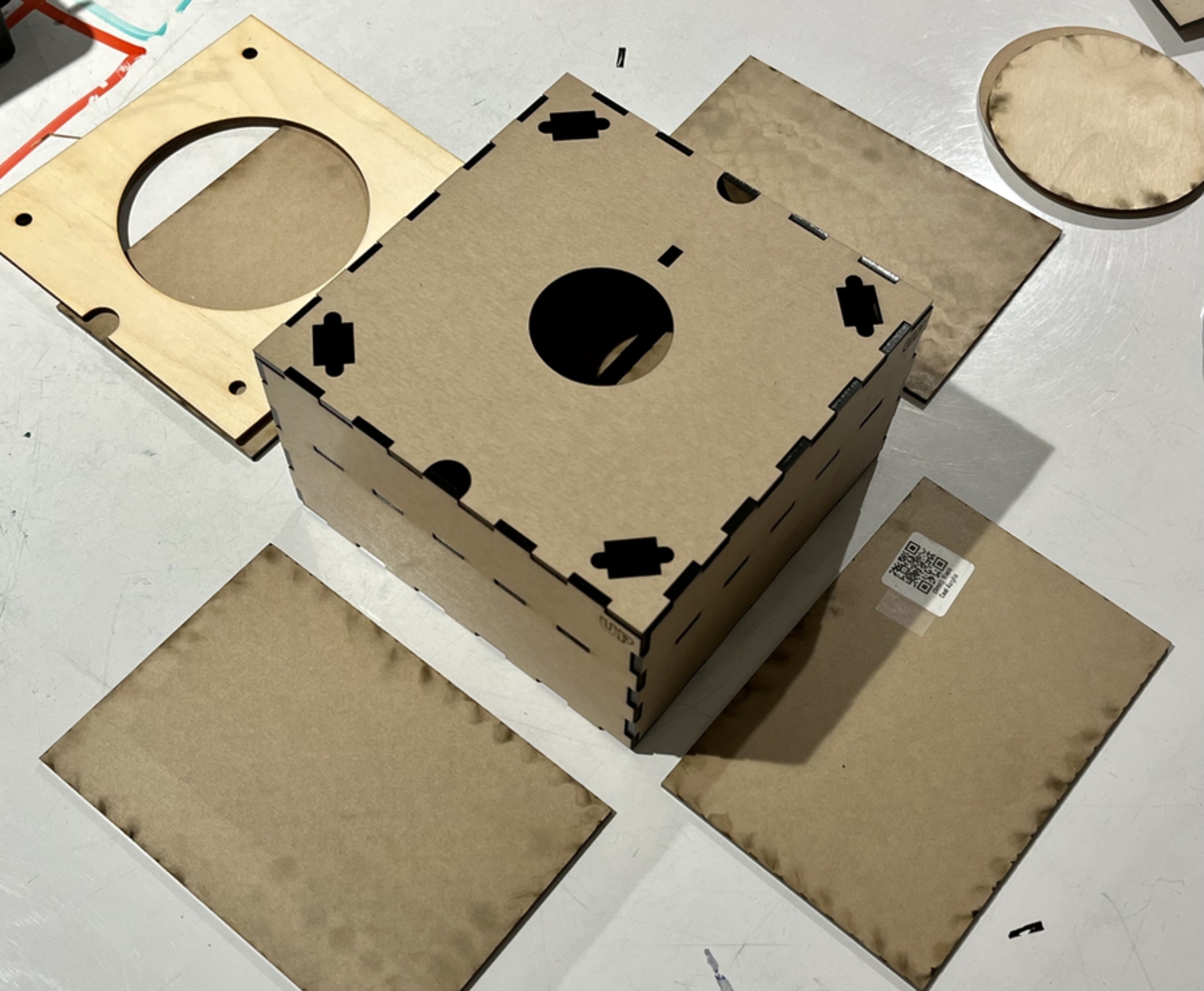
Laser cutting serves as the primary method of fabrication for custom shapes and joinery of plexi glass panels, allowing rapid prototyping combined with a preliminary polished appearance of the project.

Technical Resources:
- Adafruit Arduino Code Library: Adafruit Industries · GitHub
- CMU IDEATE 3D Printing - SkyLab : 3D Printers – IDeATe Resources (cmu.edu)
- Non-Delay Coding Tutorial: Simple Delays, non Blocking & timer free
Bill of Materials:
- Micro Controller (Arduino Uno R3) (1ct)
- 16Bulbs LED light ring (1ct)
- LED light strip (1ft)
- Servo Motor (Amazon brand) (1ct)
- Proximity Sensor (Adafruit ANCL4730) (1ct)
- LCD Screen (Adafruit ST7789) (1ct)
- High-power LED light with heatsink (1ct)
- 3mmPlexiglass panel (1 sheet)
- 6mm Plywood panel (1 sheet)
Annotated Final Product:
content
You can upload files of up to 20MB using this form.
